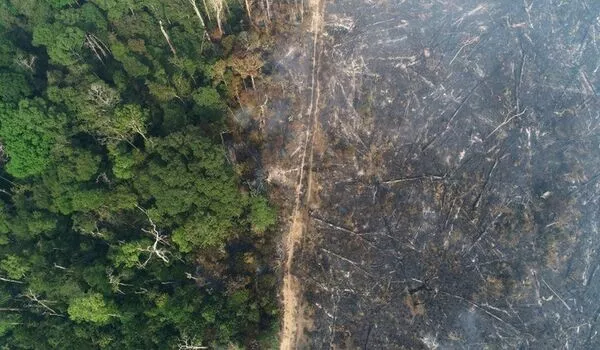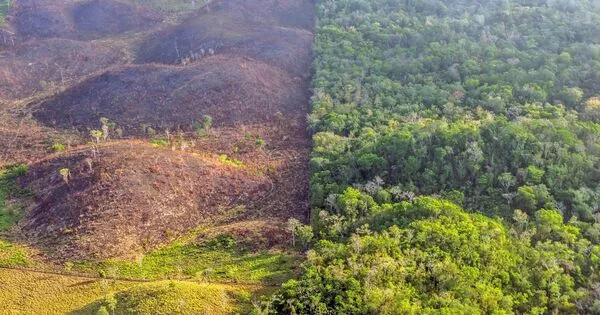Before we look at specific trends in deforestation around the world, it’s important to understand the net change in forest cover. The net change in forest cover subtracts any gains in forest cover resulting from natural forest expansion or afforestation through tree planting.
Over the last 60 years, the global forest area has shrunk by 81.7 million hectares, contributing to a more than 60% decline in global forest area per capita. According to a new study published today in the journal Environmental Research Letters by IOP Publishing, biodiversity loss threatens the future of biodiversity and has an impact on the lives of 1.6 billion people worldwide.
A team of researchers led by Ronald C. Estoque of the Center for Biodiversity and Climate Change, Forestry and Forest Products Research Institute in Japan discovered that the global forest area has declined by 81.7 million hectares between 1960 and 2019, equivalent to more than 10% of the entire Borneo Island, with gross forest loss outweighing gross forest gain.
The continuous loss and degradation of forests affect the integrity of forest ecosystems, reducing their ability to generate and provide essential services and sustain biodiversity. It also impacts the lives of at least 1.6 billion people worldwide, predominantly in developing countries, who depend on forests for various purposes.”
Ronald C. Estoque
The team used the global land use dataset to examine how global forests have changed over space and time. Consequently, the decline in global forests combined with the increase in global population over the 60-year period has resulted in a decrease of the global forest area per capita by over 60%, from 1.4 hectares in 1960 to 0.5 hectares in 2019.
The authors explain, “the continuous loss and degradation of forests affect the integrity of forest ecosystems, reducing their ability to generate and provide essential services and sustain biodiversity. It also impacts the lives of at least 1.6 billion people worldwide, predominantly in developing countries, who depend on forests for various purposes.”

The results also revealed that the change in the spatiotemporal pattern of global forests supports the forest transition theory, with forest losses occurring primarily in the lower-income countries in the tropics and forest gains in the higher-income countries in the extratropics. Ronald C. Estoque, the lead author of the study, explains, “despite this spatial pattern of forest loss occurring primarily in the less developed countries, the role of more developed nations in this said forest loss also needs to be studied more deeply. With the strengthening of forest conservation in more developed countries, forest loss is displaced to the less developed countries, especially in the tropics.”
“Today, monitoring of the world’s forests is an integral part of various global environmental and social initiatives, including the Sustainable Development Goals (SDGs), the Paris Climate Agreement, and the Post-2020 Global Biodiversity Framework. To help achieve the goals of these initiatives, there is a profound need to reverse, or at least flatten, the global net forest loss curve by conserving the world’s remaining forests and restoring and rehabilitating degraded forest landscapes,” the authors further explain.





